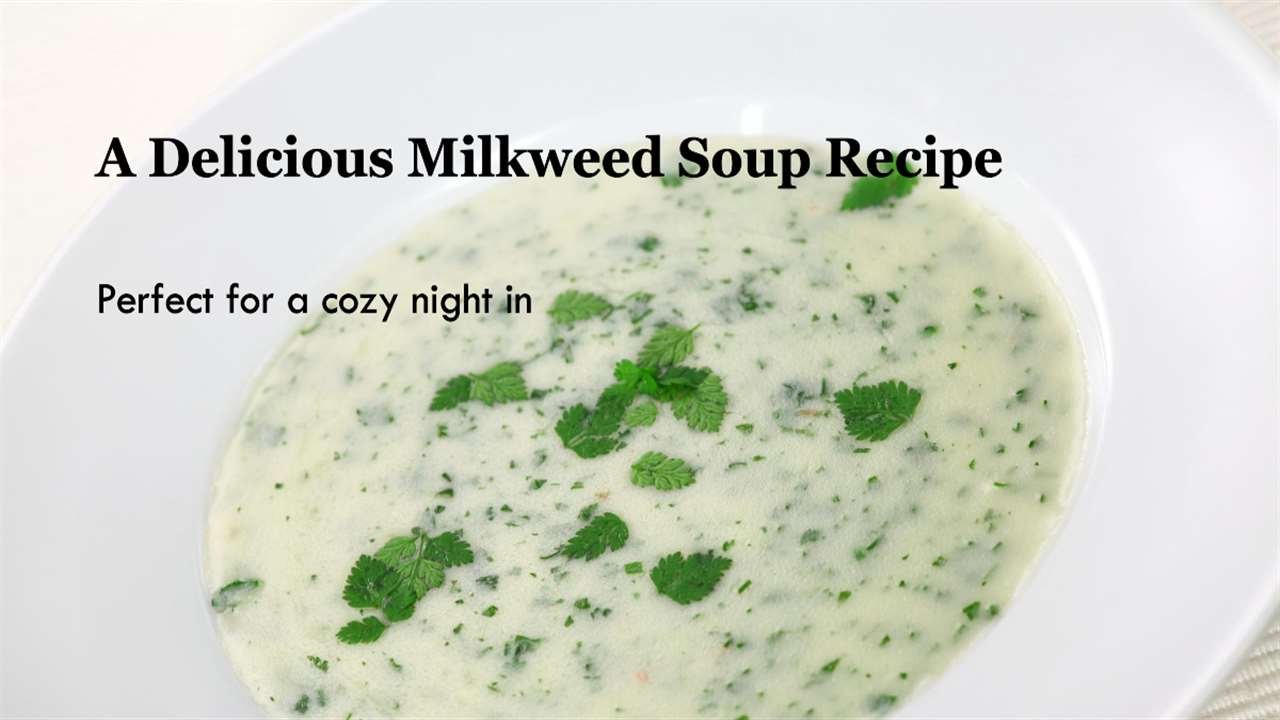Greetings, fellow culinary adventurers! Today, we’re stepping into the realm of unique and sustainable eats with a recipe that might raise a few eyebrows: Milkweed Soup Recipe. If you’ve ever wondered about the potential culinary delights hidden in the wild, this is your chance to explore the uncharted territories of foraged flavors. In this gastronomic journey, we’ll uncover the wonders of milkweed, understand its historical uses, and guide you through the process of creating a delicious Milkweed Soup right in your own kitchen.
The Marvel of Milkweed
Before we delve into the culinary magic, let’s take a moment to appreciate the marvel that is milkweed. Often considered a common roadside weed, milkweed is a fascinating plant with a rich history. Beyond its role as a vital food source for monarch butterflies, milkweed has been a part of human diets in various cultures, offering a unique set of flavors and textures.
Embracing Nature’s Bounty: Historical Uses of Milkweed
Throughout history, indigenous communities have recognized the value of milkweed as more than just a weed. Native American tribes, for instance, incorporated milkweed into their diets, appreciating its nutritional benefits. It’s time to reimagine the possibilities of foraged foods and bring the historical use of milkweed into our modern kitchens.
Milkweed in the Kitchen: Exploring Culinary Creativity
Now, let’s dive into the heart of the matter – creating a delicious Milkweed Soup. The culinary potential of milkweed lies not only in its unique taste but also in its versatility. By harvesting young shoots and buds, you can incorporate milkweed into a variety of dishes, and today, we’re focusing on a soul-warming soup.
Milkweed Soup Recipe: From Nature to Table
Ingredients:
- Fresh Milkweed Shoots and Buds: Harvest young shoots, ensuring they are tender and about 4 to 6 inches in length.
- Chicken or Vegetable Broth: For the flavorful base.
- Onions and Garlic: To add depth and aromatic richness.
- Potatoes: Diced for a hearty texture.
- Carrots: Sliced for sweetness and color.
- Thyme and Bay Leaves: For herbal undertones.
- Salt and Pepper: To taste.
- Olive Oil: For sautéing.
Cooking Steps:
- Prepare the Milkweed Shoots:
- Rinse the shoots thoroughly and trim any tough ends.
- Chop the shoots into bite-sized pieces.
- Sauté Onions and Garlic:
- In a pot, heat olive oil and sauté chopped onions and garlic until fragrant.
- Add Potatoes and Carrots:
- Introduce diced potatoes and sliced carrots to the pot, stirring to combine.
- Pour in Broth:
- Pour in the chicken or vegetable broth, enough to cover the vegetables.
- Season and Simmer:
- Add thyme, bay leaves, salt, and pepper to the pot. Let the soup simmer until the vegetables are tender.
- Incorporate Milkweed:
- Gently add the chopped milkweed shoots to the pot and simmer until they are cooked but still maintain their vibrant green color.
- Serve Hot:
- Ladle the soup into bowls and serve hot, savoring the unique taste of milkweed.
The Perplexity of Foraged Flavors
Milkweed Soup introduces a perplexity of flavors to your palate. The shoots offer a mild, slightly sweet taste, reminiscent of asparagus but with a unique twist. The combination of thyme, bay leaves, and the earthiness of the broth creates a symphony of tastes, making each spoonful a delightful surprise.
Embracing Burstiness: Textures in Harmony
Just as milkweed provides a burst of life for butterflies, Milkweed Soup brings a burstiness of textures to your dining experience. The tender shoots contrast with the heartiness of potatoes and carrots, creating a harmony that delights both the senses and the appetite.
Nature’s Bounty on Your Plate
Consider this: as you sip on a bowl of Milkweed Soup, you’re not just enjoying a meal but partaking in a tradition that spans centuries. It’s a reminder that nature’s bounty is vast and varied, offering culinary possibilities beyond the supermarket shelves. By embracing foraged flavors like milkweed, we connect with the land and its gifts in a way that goes beyond the ordinary.
Conclusion: A Taste of Wild Wisdom
In conclusion, Milkweed Soup is more than just a recipe; it’s a journey into the wisdom of foraged foods. As we rediscover the historical uses of milkweed and bring it to our tables, we not only expand our culinary horizons but also cultivate a deeper appreciation for the gifts of nature. So, the next time you spot milkweed on your nature walk, consider bringing a taste of the wild into your kitchen. Your taste buds and the environment will thank you for the adventure.
For more ideas, recipes, and cooking tips and tricks, please visit us at Lake Chelan Marina Coffee.
FAQs
Q1: Is it safe to eat milkweed?
Yes, it is safe to eat certain parts of the milkweed plant, particularly the young shoots and buds. However, it’s crucial to correctly identify milkweed and harvest it in its early stages for culinary use.
Q2: Can I use milkweed from my backyard?
If you are sure it’s milkweed and not a similar-looking plant, you can use milkweed from your backyard. However, ensure it hasn’t been treated with pesticides.
Q3: Where else can I use milkweed in cooking?
Apart from soup, you can incorporate young milkweed shoots into salads, stir-fries, or even pickle them for a unique flavor addition.
Q4: Are there any precautions when harvesting milkweed?
When harvesting milkweed, make sure to wear gloves, as the sap can be irritating to the skin. Additionally, harvest only a small portion of the plant to ensure sustainability.
Q5: Can I freeze Milkweed Soup?
While it’s best enjoyed fresh, you can freeze Milkweed Soup for later consumption. Allow it to cool before transferring it to a freezer-safe container, leaving room for expansion. Thaw and reheat gently on the stovetop when ready to enjoy.

